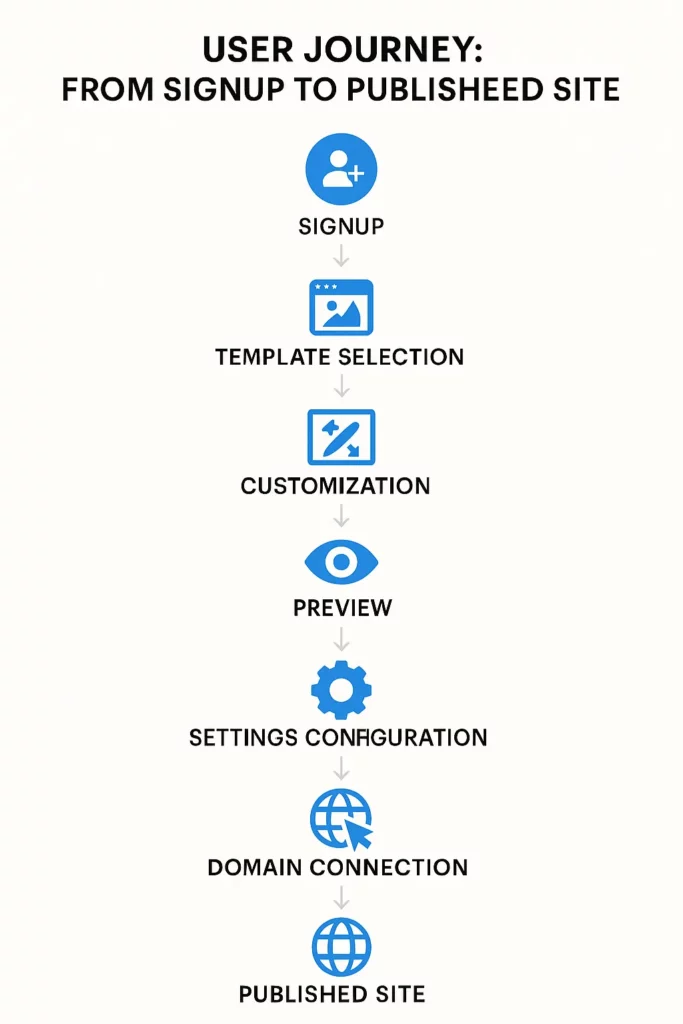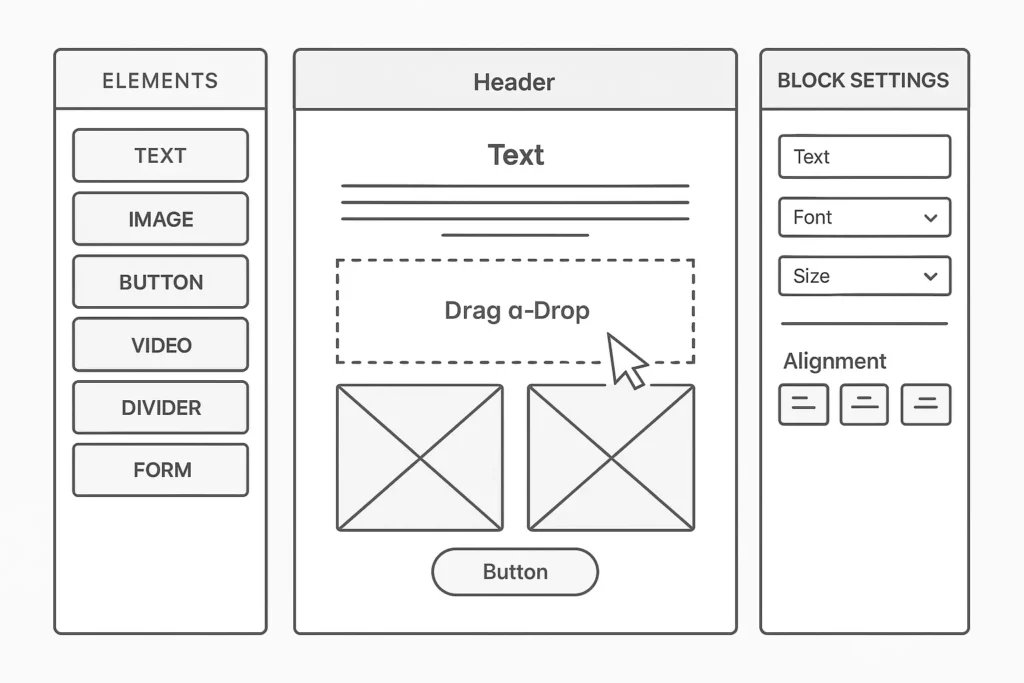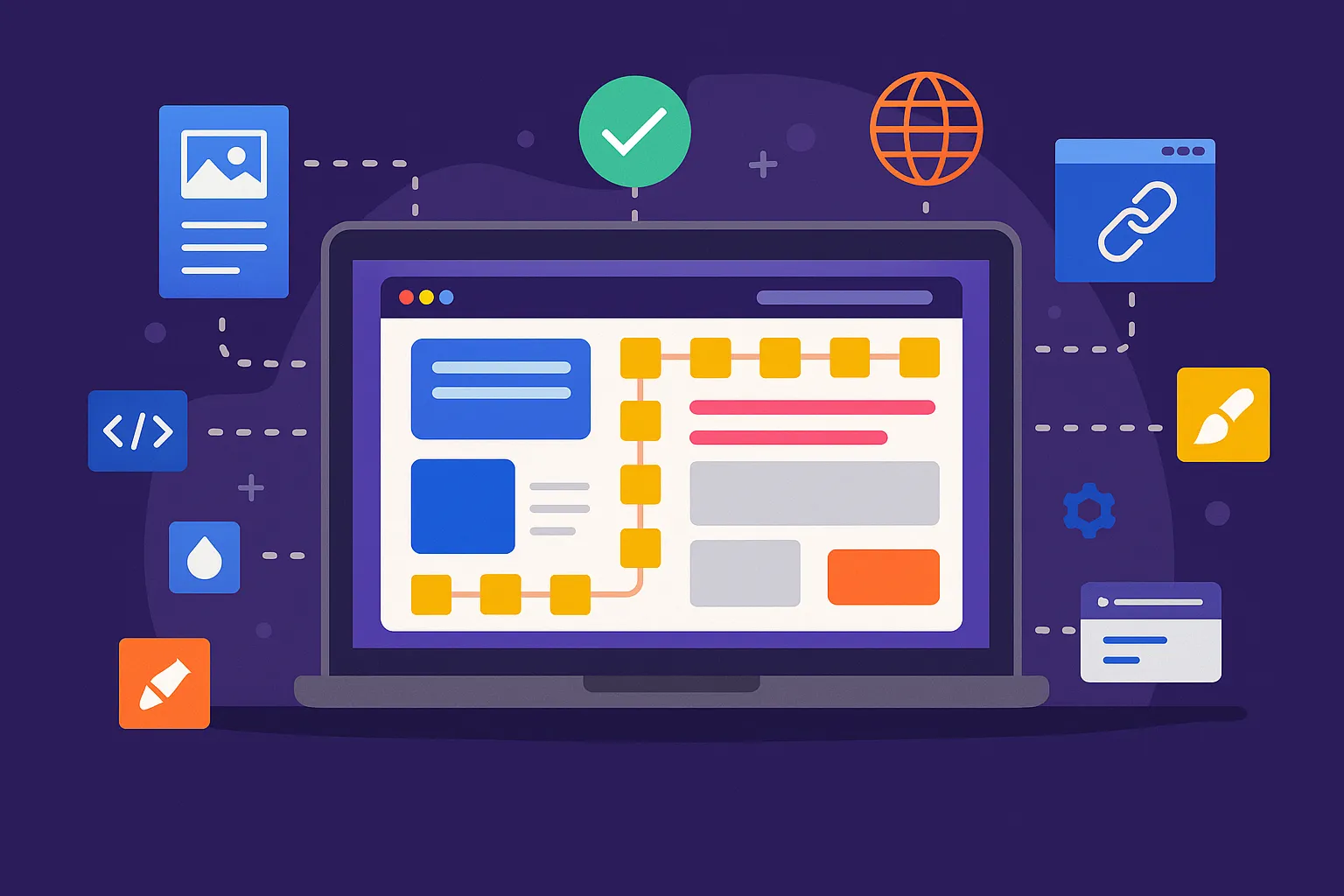Imagine launching a full-fledged website builder app—something like Webflow, but leaner, smarter, and yours. In 2025, that dream is more realistic than ever. As the no-code revolution continues and millions of small businesses move online, the demand for easy-to-use, drag-and-drop site creators has exploded. This isn’t just a trend—it’s a shift in how the internet is built. Whether you’re inspired by Webflow’s dynamic features or looking to launch your own Wix-like website builder app, the SaaS model offers unmatched scalability.
Take a look around: from yoga instructors to freelance designers, everyone wants a polished website without hiring a developer. Add to that the booming creator economy, the rise of solopreneurs, and AI-powered everything, and you’ve got a massive market ready to pay for intuitive web-building tools.
I still remember tinkering with WordPress themes back in the day—editing CSS files line by line, just to fix a header. Brutal. But now? With the right tech stack and strategy, you can build a platform where users launch sites in minutes. Stick around, because this post will walk you through the nuts and bolts of creating a website builder SaaS platform—from idea to MVP and beyond.

Why Build a Website Builder SaaS?
Building a website builder might sound like going toe-to-toe with giants like Wix or Squarespace, but the game has changed. Here’s why:
- Niche is king: You can target underserved markets—local language builders, portfolio-first platforms, or creator-specific tools.
- Recurring Revenue Model: With subscriptions, you build Monthly Recurring Revenue (MRR)—every SaaS founder’s dream.
- Low-Code Backends: With frameworks like Firebase, Supabase, or BaaS tools, you’re not starting from scratch.
The timing is right, and the tools are sharper than ever.

Read more: How to Start a Website Builder Platform Business
Core Features Your App Must Have
To compete and stand out, your website builder app should offer features that feel intuitive but powerful. Here’s what’s non-negotiable:
Drag-and-Drop Editor
The heart of the experience. Users should be able to add text, images, buttons, and sections easily. Think real-time preview, inline editing, and flexible grids.
Pre-Built Templates
Offer starter templates for portfolios, businesses, blogs, and e-commerce. Bonus points if they’re mobile-responsive and industry-specific.
Custom Domain Support
Let users connect their own domains or buy new ones through an integrated registrar like GoDaddy or Namecheap API.
Mobile Responsiveness
Everything should just work on mobile. That includes the editor preview, templates, and even the dashboard.
Third-Party Integrations
Support for Google Analytics, Mailchimp, Stripe, Calendly, and more. These boost user adoption and stickiness.
SEO Tools
Let users set meta titles, descriptions, alt text, and even auto-generate sitemaps.

Tech Stack Options
Choosing your tools wisely can make or break development speed. Here’s a solid full-stack setup:
| Layer | Tools |
| Frontend | React.js or Vue.js (for a dynamic editor) |
| Backend | Node.js, Django, or Laravel |
| Database | PostgreSQL or Firebase (for real-time sync) |
| Hosting | Vercel, AWS Amplify, or DigitalOcean |
| Authentication | Firebase Auth, Auth0 |
| Payments | Stripe for subscriptions and invoicing |
| Storage | AWS S3 or Cloudinary (for images, videos, assets) |
Want AI in the mix? Use OpenAI’s API for generating content, or use GPT to suggest site designs.
Monetization Models that Work
If you’re building this as a business, let’s talk money. Here are the most effective ways to monetize:
1. Freemium Plan
Let users build for free, but charge to connect domains or remove branding.
2. Tiered Subscriptions
Offer monthly and annual plans with different feature sets—storage limits, premium templates, integrations, etc.
3. Add-On Marketplaces
Sell premium templates, plugins, or custom design services.
4. White-Label Plans
Let agencies rebrand your builder and sell it as their own.
Who’s This For? Match Platform to User Type
Not every user needs the same setup. Tailor your features and messaging accordingly.
| User Type | What They Want | Features to Focus |
| Casual User | Quick setup | Templates, onboarding wizard |
| Freelancer/Creator | Portfolio showcase | Drag editor, analytics |
| SMB Owner | Business site with CTAs | Integrations, SEO, domain |
| Agency | Multi-client support | White-label, bulk management |
Test, Iterate, Improve
Before you blast off, get feedback. Launch a private beta with real users—maybe on Product Hunt or IndieHackers—and watch how they interact. Track heatmaps. Collect NPS scores. Fix what frustrates.
Don’t aim for perfection on day one. Aim for usefulness.
Pitfalls to Avoid
A few landmines many first-time founders step on:
- Overengineering: Don’t build a feature until you’ve validated user demand.
- Weak onboarding: If a user doesn’t “get it” in the first 5 minutes, they’re gone.
- Poor mobile support: Mobile-first is not optional anymore.
- Ignoring analytics: What gets measured gets improved.
What’s Next: The Future of Website Builders
By 2026, expect builders to evolve with:
- AI-designed websites: Just type what you need—done.
- Voice commands: “Add a contact form under the About section.”
- Blockchain site ownership: NFTs for templates or domain IDs?
- Community-driven templates: Think Figma meets Webflow.
If you start now, you’ll ride the wave—not chase it.
Read more: Revenue Model for a Website Builder SaaS Platform
Conclusion
Developing a website builder SaaS app isn’t just a cool project—it’s a full-blown business opportunity. With the right feature set, a focused niche, and a lean stack, you can launch something both useful and profitable. The internet needs more builders, not gatekeepers.
At Miracuves, we help innovators launch high-performance app clones that are fast, scalable, and monetization-ready. Ready to turn your idea into reality? Let’s build together.
FAQs:
Q1: Can I build this solo?
Yes, for an MVP. Use open-source site builders or page builder libraries to accelerate development.
Q2: Do I need custom hosting infrastructure?
Not at first. Start with cloud platforms like Vercel, Firebase, or Render.
Q3: How do I handle user domains?
Use services like Google Domains API or integrations with registrars to automate setup.
Q4: What’s the hardest part of building a website builder?
The editor. Drag-and-drop + real-time preview is tough but doable with React or Vue libraries like GrapesJS or Builder.io.
Q5: Can I monetize from day one?
Yes—freemium is your friend. Offer a free plan with upgrades for domains, storage, or templates.
Q6: What are good tools to test UX?
Try Hotjar for heatmaps, FullStory for session recording, and PostHog for in-app analytics.
Related Articles:








